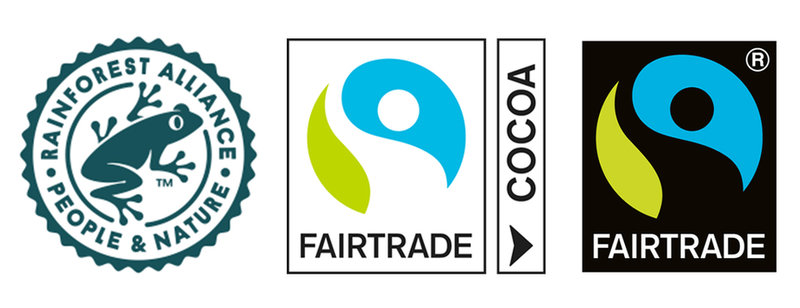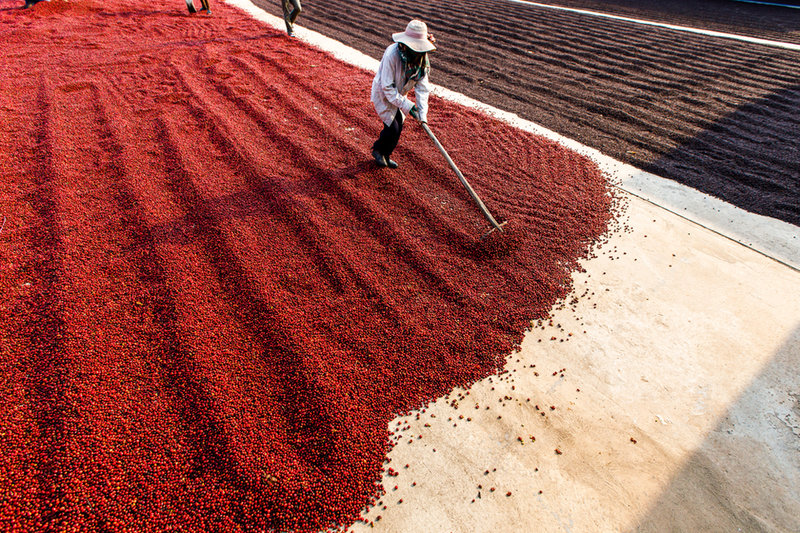sustainability | hot drinks
Shades of green: sustainability in review at The Rainforest Alliance
Recently announced changes to The Rainforest Alliance’s sustainability programme have highlighted a renewed effort to improve the sustainability of, amongst other ingredients, tea and coffee. Peter Nilson casts an eye over what third-party certification means for consumers, and the new measures being introduced.
Many consumers will be aware of the two main sustainability certifications that can be found tucked away somewhere on the packaging of groceries: the Fairtrade mark and the Rainforest Alliance Certification.
The schemes, which are becoming ubiquitous in the world of tea, coffee and sugar amongst other ingredients, are understandably of growing importance to consumers, who are becoming increasingly conscientious when it comes to sustainability. According to a Futerra survey, 88% of consumers want brands to help them live sustainably.
However, when asked to explain what these labels actually mean, both for the final product on sale or for those who have produced the ingredients, many consumers are still at a loss beyond a vague understanding that ‘they’re better, right?’
Different flavours of ethical
Most would have read the news that Nestle recently opted to switch certification of the KitKat brand in the UK and Ireland to The Rainforest Alliance from Fairtrade with passing interest at most, but the impact on farmers could be huge.
At their core, both the Fairtrade and Rainforest Alliance certifications have the same broad aim at their heart: to improve how ethical the production of crops are. How ‘ethical’ something is, however, is hard to quantify and each scheme approaches the concept differently.
In brief, the Rainforest Alliance emphasises environmental priorities and focuses on farming practices, whereas Fairtrade prioritises fairer returns to farmers and workers.
Fairtrade aims to support companies, farmers and workers in developing countries, by ensuring workers’ rights are protected, setting measures to protect local environments and ensuring companies are paid ‘Fairtrade Minimum Price’ for products - which is usually higher than market standard. An additional ‘Fairtrade Premium’ is also paid, to invest in business or community projects.
In order for a product to attain the Fairtrade label, all its ingredients are required to have been produced by small-scale farmer organisations or plantations that meet Fairtrade social, economic and environmental standards.
There have been historic arguments that Fairtrade’s requirement of 100% certified ingredients could actually be a barrier for companies wanting to improve their social and environmental responsibility. However, there are other labels, should a product only meet the criteria for one ingredient. For example, the Fairtrade Cocoa Programme label would signify that only the cocoa in a product meets these requirements.

Third party certification is becoming ubiquitous on groceries
The Rainforest Alliance, on the other hand, supports the conservation of biodiversity and ensures sustainable livelihoods by transforming land-use practices, business practices and consumer behaviour.
In contrast to the Fairtrade mark, only 30% of the ingredients in a product are required to meet these terms, provided that up-scaling to 100% happens at some point in the future.
The Rainforest Alliance does not guarantee a fair minimum price for farmers, as is the case with Fairtrade. However, it does aim to grow farmer earnings by improving farming practices and productivity, which eventually facilitates access to high value markets.
The fact that only 30% of a product needs to meet requirements, providing that the exact amount is noted on the label, arguably offers smaller companies a useful entry point onto the ethical market.
With the option to scale up to 100%, companies have an opportunity to become more ethical in the future if they want to be, and they also get credit with consumers for attempting to be more ethical.
What’s new for the Rainforest Alliance?
Although both schemes arguably have their flaws, change is coming for The Rainforest Alliance, with last month’s announcement that a new sustainability scheme is being rolled out from September 2020. From July 2021, all audits will be conducted against the new standards.
The Rainforest Alliance 2020 Certification Programme consists of the Sustainable Agriculture Standard with requirements for farms and supply chains, along with a new assurance system and a suite of tools to measure progress towards sustainability objectives.
While the new certification requirements improve on the NGO’s existing focus on farming practices and environmental stewardship, there are some notable inclusions, including a renewed focus on a living wage for producers, which seem to be an attempt to address the argument of social and economic shortfallings when compared to Fairtrade’s requirements.

One of the most meaningful changes to the 2020 programme is a mandatory sustainability differential above the market price: a price premium paid to producers that will be required by companies further along the supply chain for certification.
Alongside the differential are required sustainability investments by companies purchasing from farmers, which are mandatory investments from buyers to producers for the specific purpose of helping them meet the requirements of the Sustainable Agriculture Standard.
Many would view these payments as an attempt by the Rainforest Alliance to mirror the Fairtrade Minimum Price and Fairtrade Premium.
Another notable update in the new programme is the introduction of an ‘assess and address’ approach to tackling workplace violence and harassment, child labor, forced labor and discrimination.
The move away from the previous pass/fail system suggests a philosophy for continuous improvement of workers rights, rather than simply ensuring the minimum requirements are met.
These renewed efforts to tackle not just environmental concerns, but also the social and economic improvement for local farming communities in developing countries will surely be welcomed, and could well help address the areas which so many have argued that The Rainforest Alliance has failed in. Only time will tell how meaningful the changes to the new Programme will be, but for now, ‘they’re better, right?’, will be a pleasing thing for consumers to hear.